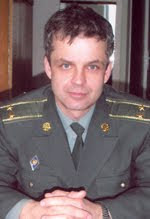January 25, 2018 (BBC
News Europe) The Russian release of British comedy film The Death
of Stalin has been shelved following a screening before senior figures on
Monday night. The Russian attendees complained that the satire contained
"ideological warfare" and "extremism". The film's
distribution certificate was withdrawn, effectively cancelling its planned
Thursday release.
It is not clear if
the film, starring Steve Buscemi and Jeffrey Tambor, will be shown in Russia at
all. The culture ministry told Interfax news agency it had informed the film's
Russian distributor, Volga Films, of the decision. "A decision on whether
it will be shown will be made later," the ministry was quoted as saying.
The film, from
director Armando Iannucci, is a satire of the power struggle in Moscow
following Soviet dictator Joseph Stalin's death in 1953. As a result, many of
the main characters are real historical figures. The full article is
available at:













